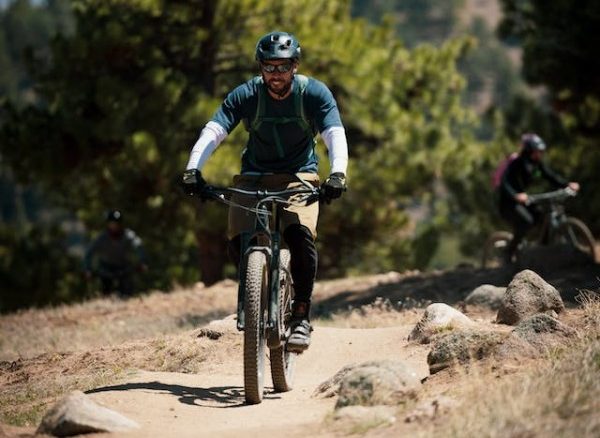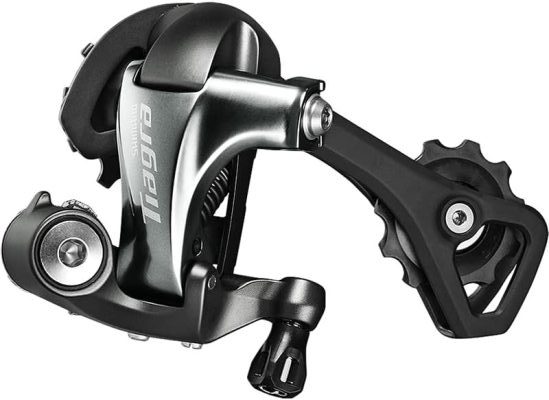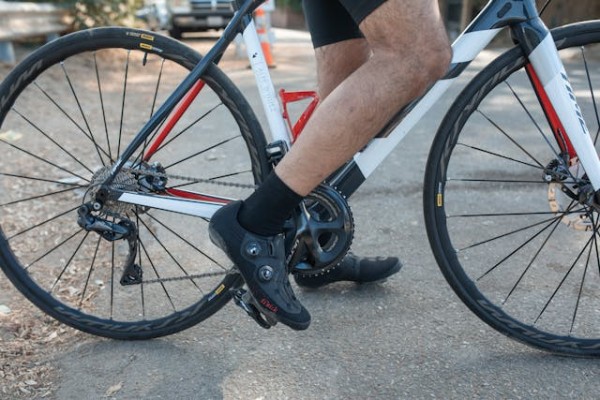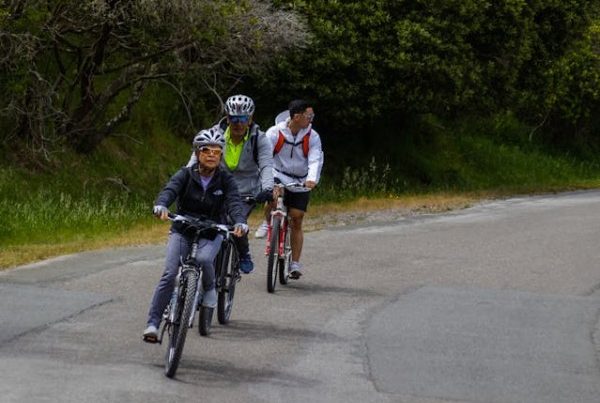You’re flying downhill, heart pounding, but suddenly you lose control and crash into a tree. Sounds painful, right? We will explore the common mistakes that mountain bikers make and provide you with valuable insights on how to avoid them. If you want to enhance your mountain biking skills and make your rides safer and more enjoyable, keep reading to discover the crucial tips and tricks that can elevate your mountain biking experience to new heights.
5. Incorrect Body Positioning

Are you struggling to maintain the correct body positioning while mountain biking? Having the right body position is crucial for a safe and enjoyable ride. To start, keep your weight centered over the bike and slightly bent at the knees and elbows. By doing so, you’ll have better control and stability over rough terrain.
Next, make sure to keep your eyes focused on the trail ahead, rather than staring down at your handlebars. This helps you anticipate obstacles and make quick adjustments. Also, avoid gripping the handlebars too tightly – a relaxed grip allows for better maneuverability. Lastly, try to maintain a neutral spine position, with your back straight and your shoulders relaxed.
4. Inadequate Bike Maintenance
Now that you have mastered correct body positioning, it’s important to shift your focus to the subtopic of inadequate bike maintenance for a safe and efficient mountain biking experience. Neglecting to properly maintain your bike can lead to serious problems on the trail.
Regularly check your tires for wear and tear and ensure they’re properly inflated for optimal grip and control. Don’t forget to inspect your brakes and make sure they’re functioning properly. A loose chain can cause your bike to shift gears unexpectedly, so be sure to keep it properly tensioned.
Additionally, regularly clean and lubricate your bike’s drivetrain to prevent rust and improve performance. Taking the time to maintain your bike won’t only extend its lifespan but also enhance your overall riding experience.
3. Ignoring Trail Conditions
To ensure a safe and enjoyable mountain biking experience, it’s crucial to always consider and adapt to the current trail conditions. Ignoring trail conditions can lead to accidents, injuries, and damage to both you and your bike.
Before hitting the trails, take the time to research and understand the current conditions. Check weather forecasts, trail reports, and local biking communities for updates. Be aware of any recent rainfall or storms that may have affected the trails. Riding on wet or muddy trails can’t only damage the trails but also make them more slippery and dangerous. Additionally, familiarize yourself with the difficulty level of the trail and adjust your riding style accordingly.
2. Poor Braking Technique
When it comes to mountain biking, one mistake you should avoid is having poor braking technique. Proper braking technique is crucial for maintaining control and safety on the trails.
Many riders make the mistake of relying solely on their front brake, which can lead to accidents and loss of control. Instead, you should learn to use both your front and rear brakes in a balanced manner. This means applying gradual pressure to both brakes simultaneously, with slightly more pressure on the rear brake.
Additionally, avoid locking up your wheels by modulating the pressure on the brakes. Practice braking techniques in different trail conditions to develop skill and confidence.
1. Lack of Proper Safety Gear
Proper safety gear is essential for a secure and protected mountain biking experience. Neglecting to wear the necessary safety equipment can result in serious injuries or even fatalities.
When mountain biking, always wear a properly fitting helmet to protect your head from potential impacts. Elbow and knee pads can shield your joints from scrapes, bruises, and fractures in case of a fall.
Additionally, wearing padded gloves can provide a better grip and prevent hand injuries. Don’t forget to use protective eyewear to shield your eyes from dirt, debris, and branches.
Frequently Asked Questions
How Often Should I Perform Bike Maintenance to Ensure Optimal Performance and Safety?
To ensure optimal performance and safety, it’s important to perform regular bike maintenance. How often? Well, it depends on how often you ride and the conditions you ride in. As a general rule, you should perform basic maintenance tasks like cleaning and lubricating your bike after every ride.
Additionally, you should check your tires, brakes, and gears regularly for any signs of wear or damage. Don’t forget to give your bike a thorough inspection before any big rides or races.
What Are Some Key Factors to Consider When Assessing Trail Conditions Before Going Mountain Biking?
Before hitting the trails, it’s crucial to assess the conditions. Look out for any potential hazards like loose rocks or fallen branches. Check the weather forecast and be wary of muddy or slippery terrain. Take note of any recent trail maintenance or closures.
Remember to bring essential gear like a helmet, knee pads, and a reliable bike. By evaluating the trail conditions beforehand, you’ll have a safer and more enjoyable mountain biking experience.
Conclusion
By maintaining the correct body positioning, keeping up with bike maintenance, paying attention to trail conditions, practicing proper braking techniques, and wearing the right safety gear, you’ll be able to enjoy your mountain biking adventures to the fullest. Don’t let these small errors ruin your ride; take control and ride confidently with these tips in mind.





